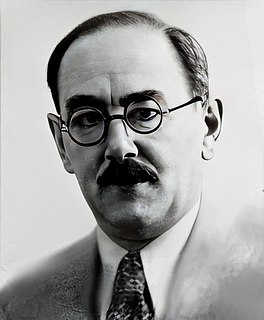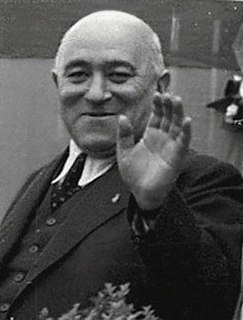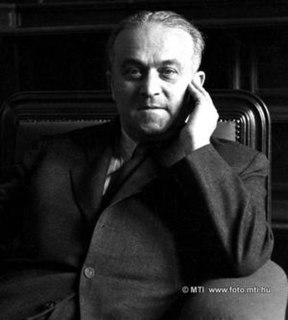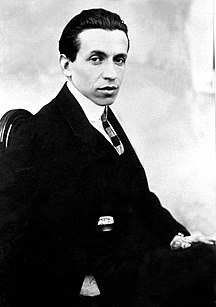 W
WLászló Deseő was a Hungarian military officer and diplomat, who served as artillery commander of the Hungarian Second Army's First Corps during the Second World War.
 W
WGyula Grosics was a Hungarian football goalkeeper who played 86 times for the Hungary national football team and was part of the "Golden Team" of the 1950s. Regarded as one of the greatest goalkeepers of all time, he was thought to be the first goalkeeper to play as the sweeper-keeper. Grosics was nicknamed "Black Panther", because he wore black clothing while playing. He won a gold medal in football at the 1952 Summer Olympics.
 W
WIván vitéz Hindy de Kishind or vitéz kishindi Hindy Iván was an officer in the Royal Hungarian Army during World War II.
 W
WDr. Béla Király was a Hungarian army officer before, during, and after World War II. After the war, he was sentenced to life in prison under the Soviet-allied regime, but was later released. After his release, he commanded the National Guard in the 1956 Hungarian Revolution. He then fled to the United States, where he became an academic historian. He returned to Hungary after the collapse of the Soviet Bloc and was elected a member of Hungarian Parliament.
 W
WHenry (I) Kőszegi from the kindred Héder, commonly known as Henry the Great, was a Hungarian influential lord in the second half of the 13th century, founder and first member of the powerful Kőszegi family. Henry was one of the most notable earlier "oligarchs", who ruled de facto independently their dominion during the era of feudal anarchy.
 W
WIvan Kőszegi was an influential lord in the Kingdom of Hungary at the turn of the 13th and 14th centuries. Earlier historiographical works also refer to him Ivan Németújvári. He was Palatine in 1281, between 1287 and 1288, and from 1302 until 1307, Ban of Slavonia in 1275, from 1284 until 1285 and in 1290, and Master of the treasury in 1276 and 1291.
 W
WBéla Kun was a Hungarian Communist activist and politician who governed the Hungarian Soviet Republic in 1919.
 W
WPál Maléter was the military leader of the 1956 Hungarian Revolution.
 W
WImre Nagy was a Hungarian communist politician who served as Prime Minister and Chairman of the Council of Ministers of the Hungarian People's Republic from 1953 to 1955. In 1956 Nagy became leader of the Hungarian Revolution of 1956 against the Soviet-backed government, for which he was executed two years later.
 W
WVince Nagy de Losonc was a Hungarian politician, who served as Interior Minister between 1918 and 1919 during the Hungarian Democratic Republic. After the establishment of the Hungarian Soviet Republic, he returned to Szatmárnémeti, where the occupying Romanian Army imprisoned him for 9 months. From 1922, he was a lawyer. From 1928, he was the chairman of the Independence Party. After the German occupation Nagy had to escape because of his anti-Nazi views. After the Second World War, he rejected the cooperation with the Hungarian Communist Party, that is why he was excluded with 18 other members from the party.
 W
WMátyás Rákosi [ˈmaːcaːʃ ˈraːkoʃi] was a Hungarian communist politician. He was born Mátyás Rosenfeld in Ada. Rákosi was the leader of Hungary's communist party from 1945 to 1956 — first as General Secretary of the Hungarian Communist Party (1945–48) and later holding the same post with the Hungarian Working People's Party (1948–56). As such, from 1949-56, he was the de facto ruler of Communist Hungary.
 W
WDezső Révai was a Hungarian photographer and photo journalist who is mainly known for his photographs taken during the Spanish Civil War.
 W
WDr. István Ries was a Hungarian politician and jurist, who served as Minister of Justice between 1945 and 1950, during the transition period to the communism in Hungary.
 W
WOtto Roth, occasionally rendered as Willy Otto Roth or Dr. Rot, was a Hungarian and Romanian lawyer and politician who served as the only Commissioner-in-Chief of the Banat Republic, between October 1918 and February 1919. Hungarian Jewish but non-religious, he entered politics with the Hungarian Social Democratic Party (MSZDP) while still a subject of the Kingdom of Hungary. Roth was a local councilor in Timișoara during most of World War I, emerging as a regional leader of the MSZDP before and during the Aster Revolution. He is credited with proclaiming the Banat Republic on 31 October 1918, though the initiative was also attributed to Albert Bartha, who briefly served as its military leader. The state was an autonomous extension of the Hungarian Republic, set up in order to prevent invasion by the French Danube Army, but also aiming to preserve regional integrity against rival nationalisms. It was generally rejected by Romanians and Serbs, who organized their own representative institutions.
 W
WEndre Sík was a Hungarian historian, politician, Minister of Foreign Affairs between 1958 and 1961. He was the younger brother of Sándor Sík, poet, piarist teacher.
 W
WTibor Szamuely was a Hungarian politician and journalist who was Deputy People's Commissar of War and People's Commissar of Public Education during the Hungarian Soviet Republic.
 W
WGheza or Géza Vida, also known as Grigore, was a Romanian–Hungarian sculptor, engraver, industrial worker and communist militant, one of the most renowned artists of Maramureș region. The descendant of ethnic Romanian and Slovak miners, he was born in the Hungarian segment of Austria-Hungary. Raised by his mother after his father's death in World War I, he received financial support from local benefactors, who cultivated his artistic skill, particularly as a woodcarver. A citizen of Romania after the union of 1918, he was forced to drop out of school by economic circumstances, and worked for years in various industries and businesses, while also discovering his passion for beekeeping and gardening. He was drawn into far-left politics during the Great Depression, when he came to be influenced by radical artists such as Alexandru Ziffer, Aurel Popp, Vasile Kazar and Iosif Klein, who also introduced him to avant-garde experimentation. Vida was co-opted into the Union of Communist Youth and subsequently the Communist Party, producing propaganda art for both; this activity led to his temporary arrest in 1932 and 1933. A labor organizer, he helped establish the Artists' Trade Union and its branch in Baia Mare.